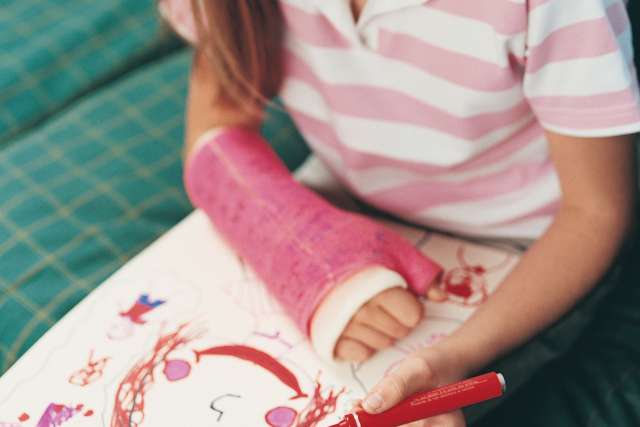Dear Doctors: Our 9-year-old daughter fell off her skateboard and hurt her arm. It seemed like just a bad sprain, but after getting an X-ray, she was diagnosed with a greenstick fracture. What is that? Will it affect her in the future? She's in a cast for at least a month.
Dear Reader: The term “greenstick fracture” refers to an incomplete break in a bone. It is different from other types of fractures, which leave the bone in two or even more distinct pieces. In a greenstick fracture, damage to the structure of the bone occurs only on one side.
These types of breaks are commonly seen in younger children, who are still in the process of growing. Their bones are softer and more elastic than adult bones. This is due, in part, to microscopic structures known as Haversian canals. These are networks of tubules that bring blood and oxygen to the living tissues of the bone. Haversian canals are lined with bundles of collagen, which is pliable. Juvenile bones contain higher numbers of Haversian canals than adult bones. They are more porous, and thanks to the additional collagen, more flexible.
Greenstick fractures typically occur in children under age 10, and they are sometimes seen in older children and even in teens. By young adulthood, however, bone structure has ossified. At that point, these types of incomplete fractures, while still possible, are rare.
Greenstick fractures of the arm are a common injury when a child tries to break a fall with an outstretched arm. They can also occur as the result of collisions while playing sports, car accidents and nonaccidental trauma, such as when a child is struck with an object. Vitamin D deficiency and other types of malnutrition can play a role in a child's susceptibility to a greenstick fracture.
As happened with your daughter, a greenstick fracture can cause minimal pain and may appear to be a sprain. In addition to pain and discomfort, symptoms can include stiffness, swelling, tenderness, bruising, warmth and weakness in the limb. In more severe breaks, a bend to the affected bone may be visible. Diagnosis is via imaging, whether an X-ray, MRI or CT scan.
With a simple fracture, treatment consists of immobilizing the bone with a cast. If a bone is visibly out of alignment, it will be necessary to manually straighten it prior to putting the limb into a cast.
If a break is severe, or when it involves nerve or tissue damage, surgery may be needed. Healing involves specialized cells, known as osteoblasts and osteoclasts, that gradually rebuild and fine-tune the new bone. Additional blood vessels, which support the rebuilding process, also form in the area.
The length of time a child spends in a cast can vary depending on the specific injury. Typically, that is four to six weeks. The good news is that our bones usually heal quickly and completely. And once the process is complete, the broken bone should be just as strong as it was before.
(Send your questions to askthedoctors@mednet.ucla.edu, or write: Ask the Doctors, c/o UCLA Health Sciences Media Relations, 10960 Wilshire Blvd., Suite 1955, Los Angeles, CA, 90024. Owing to the volume of mail, personal replies cannot be provided.)





